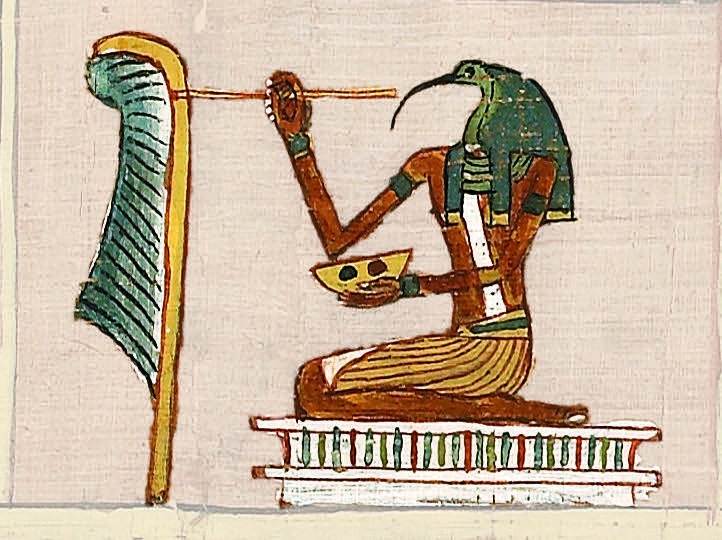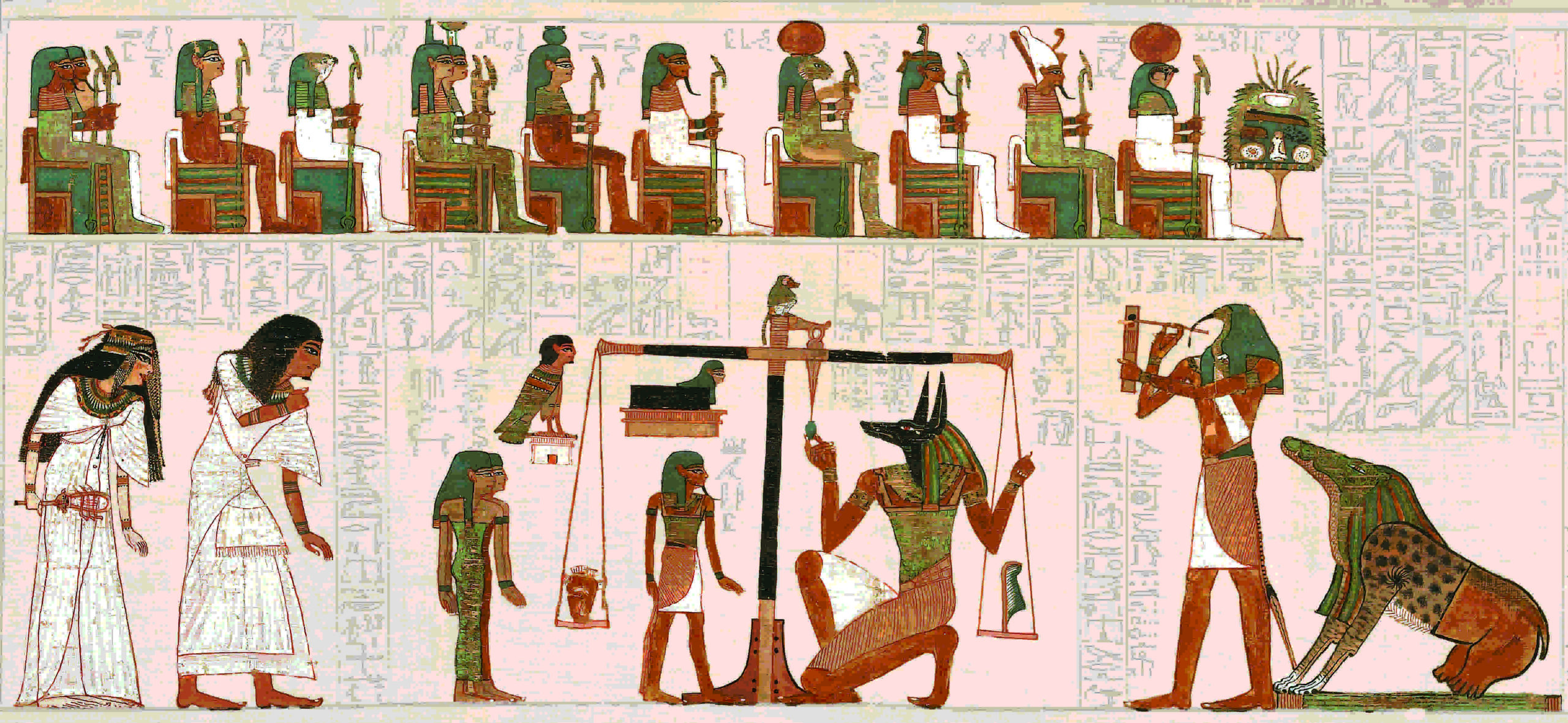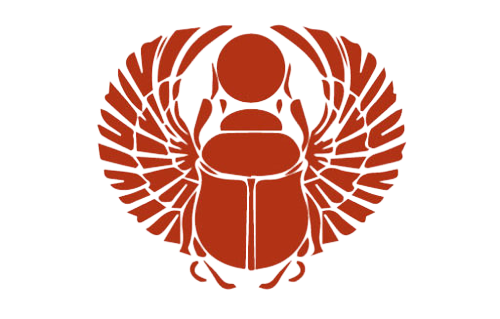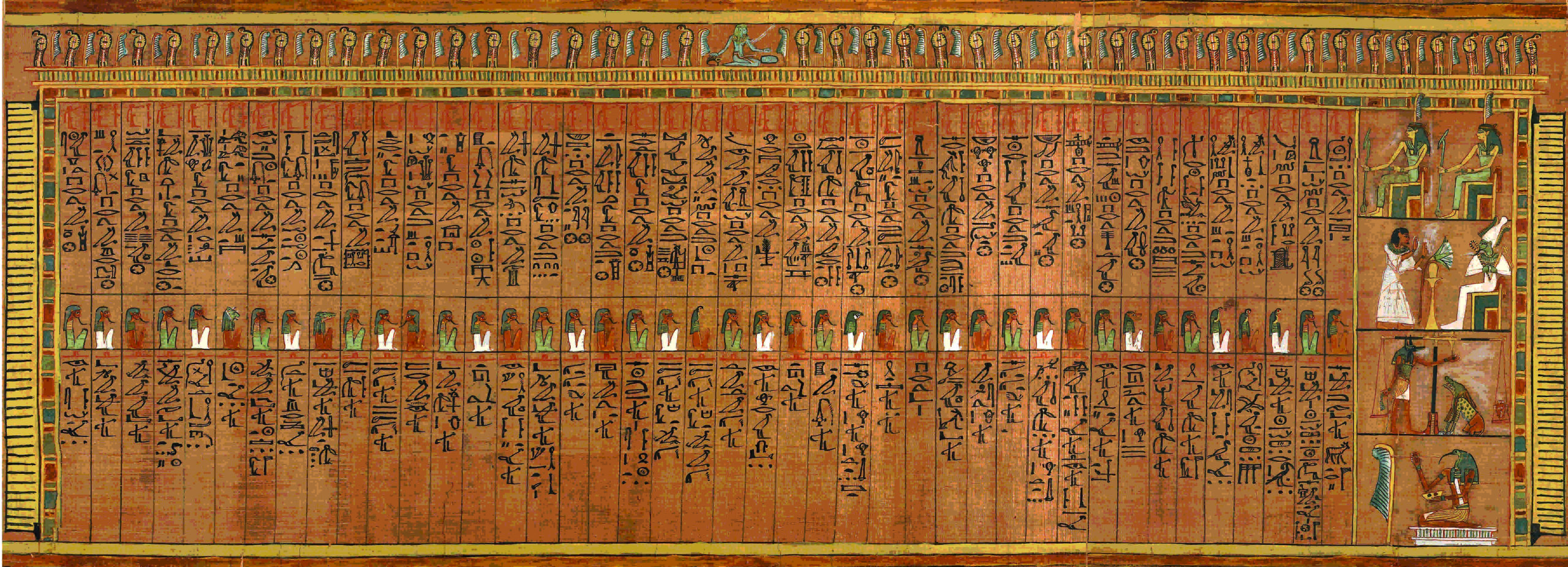One of the main goals of the Book of the Dead was to successfully pass the final judgment before the god of death, Osiris. Two of the most important moments are Negative Confession and the Soul Weighing.
Final judgment [I]: Negative confession
In the Egyptian texts the description of this passage is poetic and beautiful. It is considered to be one of the biggest achievements of Egyptian religious thought. Due to its great diffusion, we can find examples of this moment of the final judgment that include only this passage in written, or just the image of the judgement, showing us this way its extraordinary value.
The atmosphere of this scene is evocative. The deceased has to cross the threshold of the room that conducts to the judgment, framed by a huge cedar wood door. There, god Anubis, divinity which protects the dead and is responsible for mummification, was waiting for him. The jackal-headed god takes the deceased by the hand. So, both together enter the great hall where the 42 governors of the nomes or provinces that make up Egypt are. Each one will act as a judge in the Negative Confession.

In this confession, the deceased admits the good deeds done in life, in the form of negation for those that are intolerable. This way, we will hear him say: “didn’t mistreat people, I didn't do wrong, I didn’t blaspheme against God, didn’t harm a slave before his master, I wasn't the cause of affliction, I did not kill or order to kill… after reciting 42 sentences before the judges, the deceased shouted 'I am pure, I am pure!'”
The confession offers us a clear idea of the good behavior that the Egyptians defended, beyond religious beliefs. In the verdicts we can guess a concept of ethics very similar to issues that are equally execrable today. Also, it is inherited through the Judeo-Christian tradition and the 10 Commandments.
Final judgment [II] Soul weighing

After confessing that he was pure, it was time to prove it right. For this purpose, it was necessary to weigh the heart of the deceased, the place where all the actions carried out in life were captured.
There was a large gold scale in the center of the room for this purpose. Anubis was in charge of handling it to weigh the heart of the deceased. Next to the scale was the ibis-headed Thoth. God of wisdom, letters or magic among other functions, Thoth wrote about what happened in the weighing on a papyrus, with his scribe cane. Ammut, the devourer, was not far from them. A kind of monstrous being composed of the head of a crocodile, the body of a lion and the hind legs of a hippopotamus.
Ammut would devour the deceased in case the weighing of the soul was not favorable, menaing that the heart weighed more than the feather of justice, which indicated that his life was full of sins and evil deeds. Then, the psychostasis took place, the weighing of the soul. This meant the most important moment of his entire journey through the Afterlife, since if it was favorable, he could get the walk to the lalu fields.
During weighing, both plates of the scale had to be balanced. The heart of the deceased could never weigh less than the feather of the goddess Maat. Only with this balance could be demonstrated that the deceased had lived a correct life.

Osiris statuette. Metropolitan Museum of Art, New York
Last part of the final judgment.
After the weighing, Thoth wrote down the result and communicated it to the god Horus, son of Osiris. The falcon-headed divinity walked to an end of the hall where, under a rich baldachin and protected by a frieze of serpents, the god of death and supreme judge rested on his throne. Behind him, escorting him, we see his wife and sister, the goddess Isis and the goddess Nephtys.
Only then did Osiris allow the mummy to pass into his realm of the dead, the lalu fields.
This passage is only an intermediate step. The path was full of dangers still to be overcome.

Statuette of Horus, lord of Sekhmen. Metropolitan Museum of Art, New York


